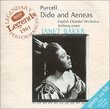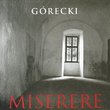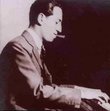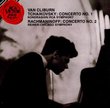| All Artists: Henryk Gorecki, David Zinman, London Sinfonietta, Dawn Upshaw Title: Henryk Gorecki: Symphony 3 "Sorrowful Songs" Members Wishing: 0 Total Copies: 4 Label: Nonesuch Release Date: 5/5/1992 Genre: Classical Styles: Opera & Classical Vocal, Historical Periods, Modern, 20th, & 21st Century, Symphonies Number of Discs: 1 SwapaCD Credits: 1 UPC: 075597928228 |
Search - Henryk Gorecki, David Zinman, London Sinfonietta :: Henryk Gorecki: Symphony 3 "Sorrowful Songs"
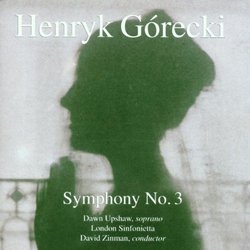 | Henryk Gorecki, David Zinman, London Sinfonietta Henryk Gorecki: Symphony 3 "Sorrowful Songs" Genre: Classical
No Description Available No Track Information Available Media Type: CD Artist: GORECKI,H. Title: SYM 3 Street Release Date: 04/28/1992 ![header=[] body=[This CD is available to be requested as disc only.]](/images/attributes/disc.png?v=15401716) ![header=[] body=[This CD is available to be requested with the disc and back insert.]](/images/attributes/disc_back.png?v=15401716) ![header=[] body=[This CD is available to be requested with the disc and front insert.]](/images/attributes/disc_front.png?v=15401716) ![header=[] body=[This CD is available to be requested with the disc, front and back inserts.]](/images/attributes/disc_front_back.png?v=15401716) |
Larger Image |
CD DetailsSynopsis
Product Description No Description Available No Track Information Available Media Type: CD Artist: GORECKI,H. Title: SYM 3 Street Release Date: 04/28/1992 Similarly Requested CDs
|
Member CD ReviewsReviewed on 8/3/2007... Dawn Upshaw may be worth the price of admission on this one. 1 of 3 member(s) found this review helpful.
CD ReviewsLike wisps of smoke rising from smoldering mass graves The Sanity Inspector | USA | 03/13/2001 (4 out of 5 stars) "I have to confess; I resisted this work for a long time, for reasons of anti-fashion. The idea that such an achingly spiritual work like this should become mood music for zinfadel-tippling yuppies was disgusting to me. Of course, to do just the opposite is also to follow fashion. I was only depriving myself, so when I finally sat down and paid serious attention to it, I was as deeply affected as most every other listener was.Poor martyred Poland! Has any country in Europe been kicked around so terribly in the last 200 years as she has? It's a wonder more music like this hasn't been produced by Polish composers. I haven't read anyone who says so, but I suspect that this work was a piece of musical _samizdat_. It was composed in 1976, halfway between the Gdansk protests and repression of 1970 and the Solidarity movement of 1980. The piece makes an obvious connection between Christ and the victims of the Holocaust, but one can easily read allusions to Poland's plight under the Soviet jackboot as well. Consider these verses from the third movement: He lies in the grave/ I know not where/ Though I ask people/ Everywhere/ Perhaps the poor boy/ Lies in a rough trench/ Instead of lying, as he might,/ In a warm bed. This could as easily refer to the massacred Polish officers at Katyn as to the victims of Auschwitz.There have been other symphonic evocations of death. There were the fever-dreams of the condemned man in Berlioz' _Symphony Fantastique_. There was the bat-winged medieval Angel of Death in Suk's _Asrael_. There was Bruckner's Symphony no. 9, which may as well have "Precious in the sight of the Lord is the death of his saints" embossed on it. And there was Mahler's Ninth, with his joys and despairs all jumbled together and arcing apart until everything just expires in that wispy, plaintive coda. But a single death is a tragedy, and a million deaths are a statistic. How can the sorrow of millions of deaths, millions of scarred souls, millions of muzzled spirits, millions of maimed lives be put across in music? Apparently, like this. Simply and directly, without a lot of flailing orchestration.The turbid rumble of double-basses at the opening clear away into a sad tune as the strings climb the scale. It's the cinematic equivalent of a slow fade-in, or a long dolly-in to closeup. And then there is Ms. Upshaw's voice, which is as lovely as can be. Then back down the scale we go, into darkness.The other two movements are much in the manner of the Estonian composer Arvo Part, widely labeled "minimalist", but really the opposite of the soulless work of better-known western composers in that idiom. The music is haunting, beautiful in its simplicity. Gorecki has been reported as being startled at the huge response the symphony elicited abroad, and he has since reverted back to his avant-garde noise-making. Maybe he suspects that he may never connect so profoundly with a wide audience again. No matter. This symphony was an event, and is a keeper." Gorecki - Spiritual and Emotional Brett A. Kniess | Madison, WI | 03/31/2006 (5 out of 5 stars) "Written for the 50th anniversary concert of Hitler's invasion of Poland and the ensuing tragedies, Henryk Gorecki's Symphony No. 3 is a powerful, prayer-like setting of memories of those events. While considered a modern composer, the work is firmly rooted in the tonal world, often creating a mantra/meditative feel; the 1976 composition is as emotional today, as it was in its own time.
The subtitle "Sorrowful Songs" is lost a little in the Polish translation, where the sense of "Wordless song", "prayer and exhortation", and "elegiac and redemptive lullaby" are qualities involved in the literal translation. The unique orchestration (4 flutes, 2 piccolos, 4 clarinets, 2 bassoons, 4 horns, 4 trombones, harp, piano, and full string ensemble) give a full, rich, intimate, chamber sound, but the beauty of a solo soprano voice adds to the absolute quality of the instruments. In three movements, each conveys a prayer in a contrasting, yet peaceful manner. Ingeniously, the 26-minute first movement is dominated simply by a canon; based on a folk song, the tune is taken up by the double-basses in low tessitura, and each voice enters at a fifth. It begins rather muddy in the lower voices, but, the gently shifting, repetitious nature, as well as the natural crescendo (achieved by adding instruments and increasing register) comes to a powerful climax, of which the movement ends the opposite by subtracting voices. 13 minutes into the opening movement, the mood changes from the kaleidoscopic motion of shifting strings, to full chords, piano attacks, and a prayer sung by soprano over huge, lush string chords. The effects of the first movement are intriguing and intense, but highly satisfying. The nine-minute second movement's text was found on the wall of Cell No. 3 in "The Palace", a Gestapo's headquarters in Zakopane, written by an 18-year old imprisoned in 1944. Lush minor chords open the movement with a rising motive. Exclamation of "Mama, mama, do not weep" referring personally and religiously, is heartbreaking. Again, thick and lush string ensemble chords dominate the texture, but rather than the ever-moving canon of the opening, long sustained, slowly-shifting chords support the pleas of the soprano soloist; the movement ends unresolved. Equally heart-wrenching is the text of the third movement; a mother who fears her son has died at the hands of the enemy, and is buried in an unknown land, asks God's flowers to cover and protect her son. The soprano melody is simple and seemingly folk-based, but more active and dramatic than the preceding movement; feelings of hopelessness and utter sorrow are sincerely portrayed with the endless shifting string chords, which seem more sounds of unearthly, or ancient chordal movements. The 17-minute final movement and the whole work ends in A major, full of hopefulness and a feeling that all of our prayers have been received with the genuine sincerity in which they have been given. David Zinman and the London Sinfonietta make this music sparkle, with a deep, velvety sheen. I do not feel that the work is overly sappy, but sincere and passionate performances. The sound is wonderfully resonant and speaks well; the orchestra plays magnificently and is captured well on recording. Dawn Upshaw is outstanding, both bright and luscious, she gives each movement a different mood, making the work a dramatic experience which unfolds, rather than a set of movements. David Zinman adds nothing that Gorecki doesn't ask for, and the composers' natural intent is given on this recording. Gorecki's music is engaging and in this case, broaches toward minimalism, rooted in tonality and modality, the prayer-like music never becomes boring or merely repetitious, but it all ends too soon. 15 years after the Zinman performance and 30 years after its composition, the work has an amazingly powerful statement and immense spirituality. A must-have recording." |

 Track Listings (3) - Disc #1
Track Listings (3) - Disc #1